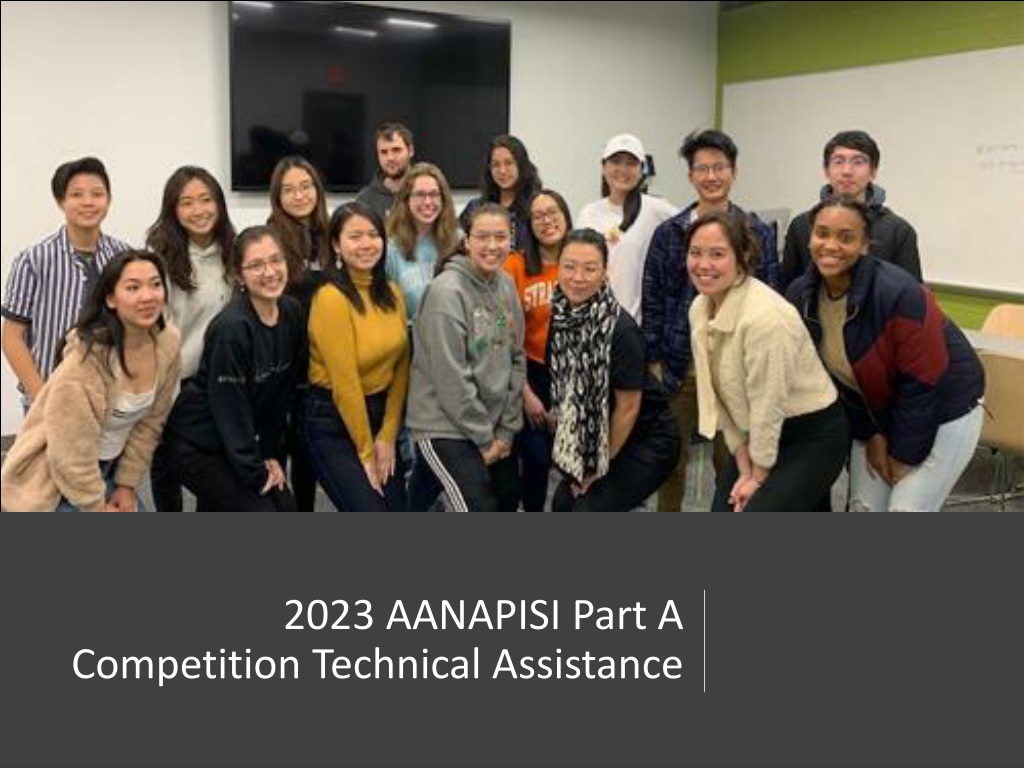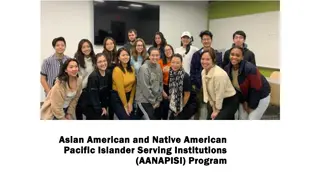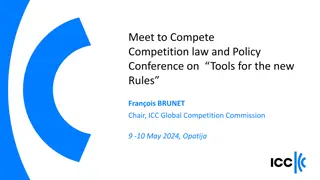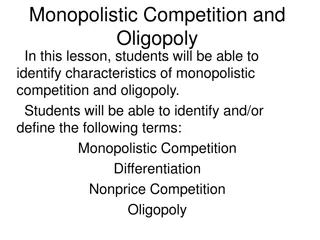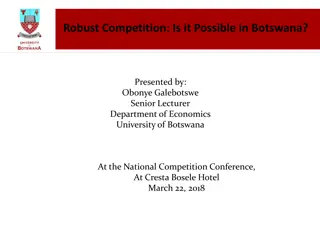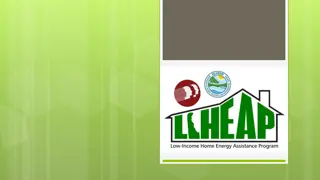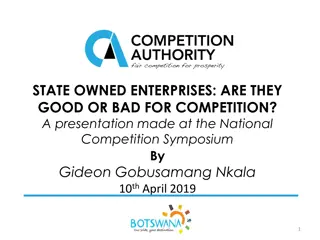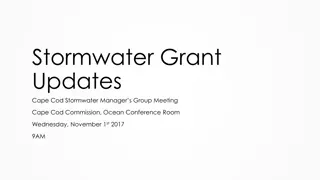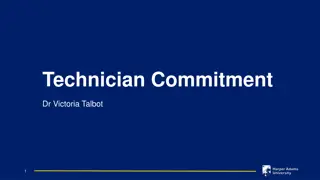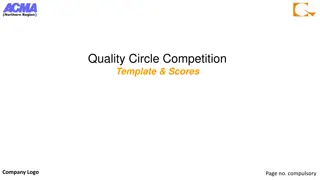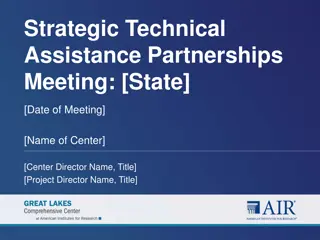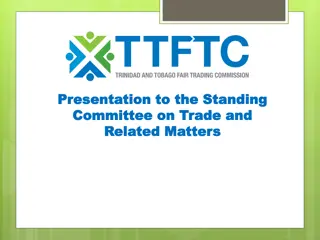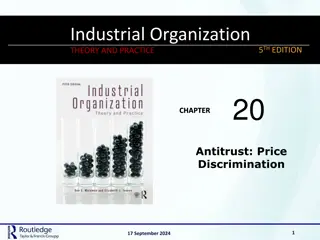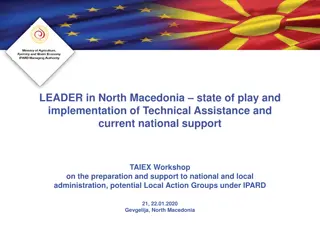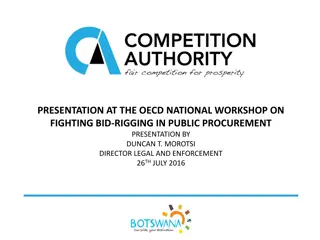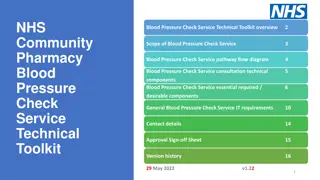AANAPISI Part A Competition Technical Assistance Details
Providing grants and assistance to AANAPISI institutions to enhance their capacity in serving Asian Americans, Native Americans, Pacific Islanders, and low-income individuals. Eligibility requirements, application submission details, instructions, and page format guidelines are outlined in the content.
Download Presentation

Please find below an Image/Link to download the presentation.
The content on the website is provided AS IS for your information and personal use only. It may not be sold, licensed, or shared on other websites without obtaining consent from the author.If you encounter any issues during the download, it is possible that the publisher has removed the file from their server.
You are allowed to download the files provided on this website for personal or commercial use, subject to the condition that they are used lawfully. All files are the property of their respective owners.
The content on the website is provided AS IS for your information and personal use only. It may not be sold, licensed, or shared on other websites without obtaining consent from the author.
E N D
Presentation Transcript
2023 AANAPISI Part A Competition Technical Assistance
TABLE OF CONTENT I. Purpose II. Eligibility III. Submission of Applications IV. Instructions V. Selection Criteria VI. Priorities VII. Allowable/Unallowable Activities VIII. Grants.gov IX. Questions
PURPOSE OF AANAPISI The overall purpose of these programs is to provide grants and related assistance to AANAPISI to enable such institutions to improve and expand their capacity to serve Asian Americans and Native Americans Pacific Islanders and low-income individuals.
Eligibility An institution must be deemed eligible. Please visit http://opeweb.ed.gov/title3and5/ and enter your institution s eight digit OPE ID into the database. All waivers should have been received by February 27, 2023 if your institution wasn t deemed eligible At the time of application, an institution must have an enrollment of undergraduate students that is at least 10% AAPI.
Submission of Application Applications must be submitted electronically using grants.gov unless you qualify for an exception. Requirements for obtaining an exception are discussed in the Closing Date Notice. Closing date for receipt of applications are May 30, 2023 at 11:59 pm EST.
Follow Instructions It is essential that you follow all instructions completely! Read all instructions a number of times. You are being evaluated solely by what you write in your application.
Page Format! A page is 8.5 x 11 , on one side only, with 1 margins at the top, bottom, and both sides. Double space (no more than three lines per vertical inch) all text in the application narrative, except titles, headings, footnotes, quotations, references, captions, and all text in charts, tables, and graphs. These items may be single-spaced. Charts, tables, figures, and graphs in the application narrative count toward the page limit. Abstract can be single-spaced. Use a font that is either 12 point or larger or no smaller than 10 pitch (characters per inch). Suggested fonts: Times New Roman, Courier, Courier New, or Arial.
Page Limits Individual Grant Program Narrative: 50 pages Cooperative Arrangement Program Narrative: 65 pages Competitive Preference Priority 1 : 3 pages Competitive Preference Priority 2: 3 pages
Assistance Listing Number 84.031A and 84.031F Program AANAPISI Part A Rules Strengthening Institution Program (SIP) Alaska Native and Native Hawaiian Serving Institutions Native American-Serving Non-Tribal Institutions Program (NASNTI) Tribally Controlled Colleges and Universities Program (TCCU) Developing Hispanic-Serving Institutions Program (HSI) 84.031N and 84.031W 84.031X An institution may not currently have another Title III, Part A, a Title III, Part B (HBCU) or a Title V (HSI) grant: 84.031T 84.031S
Type of Grant Currently Held Type of Grant You May Apply For AANAPISI Part A Rules *Individual Development Grants Title III and V Part A ONLY May be a partner not lead institution in a Cooperative Arrangement Development Grant. **Cooperative Arrangement Development Grants (Lead) (Part A) - ONLY May submit an application for and potentially receive funding for an Individual Development Grant. If an institution currently holds a Title III or V, Part A Individual Development Grant Award or a Cooperative Development Arrangement Grant Award, see the table, to determine whether you may receive grant awards from this competition: Individual Development Grant and Cooperative Development Grant (Lead) CONCURRENTLY May not receive funding from this competition unless the one or both grants end on September 30, 2023.
Whats Included in the Page Count? Only the Program Narrative is included in the page count.
Whats Not Included in the Page Count? Application for Federal Assistance & Supplemental Information Form (SF 424) Budget Information Non-Construction Programs (ED 524) Assurances and Certifications Budget Narrative Table of Contents One-page Abstract Resumes Bibliography Letters of Support
General Comments (cont.) Selection Criteria determine the order of the application Your application is not a scavenger hunt where the readers have to search for information. Place your information in the proper place and do not depend upon readers to find it elsewhere. A person wearing a suit and tie with binoculars
General Comments Quality of the Content is Key Readers evaluations not based on writing style. Readers are not expecting a great literary work. However, it is essential to write in a clear and understandable fashion. Do check your grammar and spelling! A person with long hair holding a document
General Comments (cont.) Read and follow the guidelines. Address everything that is called for. Leave out extraneous material. Write clearly, not cryptically . Beware of jargon and buzz words. Logo with blah, blah
General Comments (cont.) Use facts and current statistics to prove your case. Be sure the facts and figures you use in one section of your application are consistent with those used elsewhere.
Selection Criteria Seven evaluation areas: Need for the project 20 points Quality of the Project Design 25 points Quality of Project Services 10 points Quality of Project Personnel 10 points Adequacy of resources 5 points Quality of the Management Plan 15 points Quality of the project evaluation 15 points Total Points: 100
Need for the project (20 points) 1. The magnitude of the need for the services to be provided or the activities to be carried out by the proposed project. (10 points) The extent to which the proposed project will focus on serving or otherwise addressing the needs of disadvantage individuals. (5 points) The extent to which specific gaps or weaknesses in services, infrastructure, or opportunities have been identified and will be addressed by the proposed project, including the nature and magnitude of those gaps or weaknesses. (5 points) 2. 3.
Quality of the Project Design (25 points) 1. The extent to which the goals, objectives, and outcomes to be achieved by the proposed project are clearly specified and measurable. (10 points) 2. The extent to which the design of the proposed project is appropriate to, and will successfully address, the needs of the target population or other identified needs. (5 points) 3. The extent to which the proposed project demonstrates a rationale. (10 points)
Quality of the Project Design Definitions Demonstrates a rationale means a key project component included in the project's logic model is informed by research or evaluation findings that suggest the project component is likely to improve relevant outcomes. Logic model (also referred to as theory of action) means a framework that identifies key project components of the proposed project (i.e., the active ingredients that are hypothesized to be critical to achieving the relevant outcomes) and describes the theoretical and operational relationships among the key project components and relevant outcomes. Project component means an activity, strategy, intervention, process, product, practice, or policy included in a project. Evidence may pertain to an individual project component or to a combination of project components (e.g., training teachers on instructional practices for English learners and follow-on coaching for these teachers). Relevant outcome means the student outcome(s) or other outcome(s) the key project component is designed to improve, consistent with the specific goals of the program.
Quality of the Project Design Selection Criterion Breakdown A logic model shows the reasoning of your project, what resources you have, how you will implement them and what you expect to change as a result of those actions. In your logic model, include the main institutional objectives that you outline in your Need for the Project (increase retention, graduation, etc.), as part of your long-term outcomes. The connections between the resources, individual activities and outputs should show how they all feed into achieving the overall goals of the project. As defined above, the logic model is related to the theory of action/theory of change. Theory of change shows the ideas (activities) that are expected to lead to change (outcomes). Theory of action details how the theory of change is delivered/implemented. A logic model encompasses both. The goals and activities in the logic model should also be listed in the implementation strategy table and vice-versa.
Sample Logic Model 22 Note: The Federal Register is the official application submission guide. This webinar provides technical assistance only.
Quality of the Project Design Selection Criterion Breakdown A logic model does not have to be only one page; it can be longer. We encourage applicants to provide a thorough and detailed logic model. Nevertheless, you may not be able to include every component of the inputs, activities, outputs, and outcomes of your proposed project. When creating a logic model, it is usually best to start with your end in mind. What is your overall goal (outcomes = Need of the Project and GPRA goals)? Build your logic model by reverse engineering. How are you going to achieve these goals (activities)? What are the tangible measures that will indicate you are on the right path (outputs)? Do not just include a logic model. There should be a narrative section (can be a table).
Quality of Project Services (10 points) In determining the quality of the services to be provided by the proposed project, the Secretary considers the quality and sufficiency of strategies for ensuring equal access and treatment for eligible project participants who are members of groups that have traditionally been underrepresented based on race, color, national origin, gender, age, or disability. In addition, the Secretary considers: (3 points) The extent to which the services to be provided by the proposed project are appropriate to the needs of the intended recipients or beneficiaries of those services. (3 points) 1.
Quality of Project Services (Continues) 2. The extent to which the services to be provided by the proposed project reflect up-to-date knowledge from research and effective practice. ( 4 points)
Quality of Project Personnel (10 points) In determining the quality of project personnel, the Secretary considers the extent to which the applicant encourages applications from employment from persons who are members of groups that have traditionally been underrepresented based on race, color, national origin, gender, age, or disability. In addition, the Secretary considers: (3 points) 1. The qualifications, including relevant training and experience of the project director or principal investigator. (4 points) 2. The qualifications, including relevant training and experience of key project personnel. (3 points)
Quality of Project Personnel Selection Criterion Breakdown For each proposed activity, list, by title which positions are being proposed to manage the Title III grant and describe the qualifications you require of that position and the amount of time each person will allot to the proposed activity. This information should be included for all staff that are key for the successful implementation of the grant, not only the project director or the Activity Director, regardless of whether they are paid by the grant or by the institution. For example, in a project that requires significant software and IT hardware updates, the institution s IT manager s experience and training are relevant and should be included.
Adequacy of Resources (5 points) 1. The extent to which the budget is adequate to support the proposed project. (3 points) 2. The extent to which the costs are reasonable in relation to the objectives, design, and potential significance of the proposed project. (2 points)
Quality of the Management Plan (15 points) 1. The adequacy of the management plan to achieve the objectives of the proposed project on time and within budget, including clearly defined responsibilities, timelines, and milestones for accomplishing project tasks. (5 points) 2. The adequacy of procedures for ensuring feedback and continuous improvement in the operation of the proposed project. (5 points) 3. The adequacy of mechanisms for ensuring high- quality products and services from the proposed project. (5 points)
Quality of the Management Plan Selection Criterion Breakdown Indicate how much time the project director and other key staff will commit to the project. Make the time commitment realistic, not too high nor too low, and relative to the tasks the individual will perform. Describe the procedures the project director will use to manage and monitor the project's progress such as how information will be provided to key administrators so they can integrate project activities with related, on-going institutional activities.
Quality of the Management Plan Selection Criterion Breakdown Describe the project director administrative authority over the activity director(s) who is normally responsible for accomplishing a specific activity's objectives. Also, describe the administrative authority of the activity director(s) over subordinates. Chart the lines of authority of the project director/project coordinator to key institutional decision makers, including the president.
Quality of the Evaluation Plan (15 points) 1. The extent to which the methods of evaluation are thorough, feasible and appropriate to the goals, objectives and outcomes of the proposed project. (10 points) 2. The extent to which the methods of evaluation include the use of objective performance measures that are clearly related to the intended outcomes of the project and will produce quantitative and qualitative data to the extent possible. (5 points)
Quality of the Evaluation Plan Selection Criterion Breakdown For each proposed activity, describe the data collection procedures the institution will use to identify the data elements, objectives, and goals identified. Include measure attainment of each proposed activity. Include procedures for analyzing and using both formative and summative data. The overall impact indicator, the goals and the objectives of this grant have been identified. How will they be measured? What elements need to be measured? How will information on those elements be collected? How often? Who is going to do it? Will it be an internal evaluator (an institutional staff member) or an external one? What are the benefits of the chosen measures? When will the evaluator begin work?
Quality of the Evaluation Plan Selection Criterion Breakdown The evaluation plan should produce a valid assessment of the implementation strategies. It should also result in annual, quantifiable evidence of the attainment of objectives for each activity and of the goals. For each proposed activity, describe in detail the project s evaluation plan, including who, what, when and how. Define the baseline indicators of progress that you will use. Once the above data are established, how will they be analyzed to show what the yearly (formative) and the 5-year (summative) results are? Will the analysis lead to obtaining formative and summative results, ones that are clearly linked to the activity objectives and the goals?
Quality of the Evaluation Plan Selection Criterion Breakdown The detailed evaluation plan should: Produce a valid assessment of your implementation strategies; Result in annual, quantifiable evidence of the extent to which you attained your objectives for each activity and your goals for which funding is requested; Include the data elements and collection procedures that you will use; and Describe procedures for analyzing and using both formative and summative data.
Competitive Preference Priorities Competitive Preference Priority 1: Meeting Student Social, Emotional, and Academic Needs: Projects that are designed to improve students social, emotional, academic, career development, with a focus on underserved students. (up to 5 points) Competitive Preference Priority 2: Increasing Postsecondary Education Access, Affordability, Completion, and Post-Enrollment Success: Projects that are designed to increase postsecondary access, affordability, completion, and success for underserved students. (up to 5 points)
Allowable Activities 1. Purchase, rental, or lease of scientific or laboratory equipment for educational purposes, including instructional and research purposes. 2. Renovation and improvement in classrooms, libraries, laboratories, and other instructional facilities. 3. Support of faculty exchanges, and faculty development and faculty fellowships to assist in attaining advanced degrees in the faculty s field of instruction. 4. Curriculum development and academic instruction. 5. Purchase of library books, periodicals, microfilm, and other educational materials. 6. Funds and administrative management, and acquisition of equipment for use in strengthening funds management.
Allowable Activities 7. Joint use of facilities such as laboratories and libraries. 8. Academic tutoring and counseling programs and student support services. 9. Establishing community outreach programs that will encourage elementary school and secondary school students to develop the academic skills and the interest to pursue postsecondary education. 10. Establishing or improving an endowment fund. 11. Academic instruction in disciplines in which Asian Americans and Native American Pacific Islanders are underrepresented. 12. Conducting research and data collection for Asian American and Native American Pacific Islander populations and subpopulations. 13. Establishing partnerships with community-based organizations serving Asian Americans and Native American Pacific Islanders.
Unallowable Activities GRANTEES MAY NOT CARRY OUT THE FOLLOWING ACTIVITES OR PAY THE FOLLOWING COSTS Activities not included in an approved application. Activities that are inconsistent with any State plan for higher education. Activities or services related to sectarian instruction or religious worship.
UNALLOWABLE ACTIVITIES(contd) Recruitment unless for hiring positions on the grant. Costs of student recruitment such as advertisements, literature, and college fairs Developing or improving non-degree or non-credit courses other than basic skills courses. Purchase of standard office equipment not related to the grant. Payment of any portion of the salary of a president, vice president, or equivalent officer who has college-wide administrative authority and responsibility at an institution to fill aposition under the grant. Activities that are operational in nature rather than developmental in nature. (No supplanting)
UNALLOWABLE ACTIVITIES(contd) Costs of organized fund-raising, including financial campaigns, endowment drives, solicitation of gifts and bequests, and similar expenses to raise capital or obtain contributions Instruction in the institution s standard courses. Costs for health and fitness programs, transportation, and daycare services Awarding contacts to anyone that participated in the development of the grant.
Grants.gov Submission Procedures and Tips for Applicants REGISTER EARLY Grants.gov registration involves many steps including registration on SAM (www.sam.gov) which may take approximately one week to complete. For detailed information on the Registration Steps, please go to: http://www.grants.gov/web/grants/register.html SUBMIT EARLY We strongly recommend that you do not wait until the last day to submit your application. Grants.gov will put a date/time stamp on your application and then process it after it is fully uploaded. VERIFY SUBMISSION IS OK You will want to verify that Grants.gov received your application submission on time and that it was validated successfully. To see the date/time your application was received, login to Grants.gov and click on the Track My Application link. SUBMISSION PROBLEMS- If you have problems submitting to Grants.gov before the closing date, please contact Grants.gov Customer Support at 1-800-518-4726, access the Grants.gov Self-Service web portal at: https://grants- portal.psc.gov/Welcome.aspx?pt=Grants
Things to Remember Attach all necessary documents Only attached PDF files in Grants.gov Complete the Budget Narrative Attachment Copy and complete the Program Profile from the Application Booklet and upload a PDF version in Grants.gov under Optional Attachment File No Indirect Cost Use relevant and updated statistics
Questions? Contact Information: Pearson.Owens@ed.gov 202-453-7997
